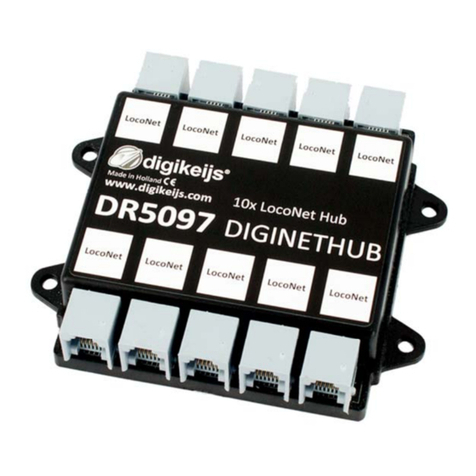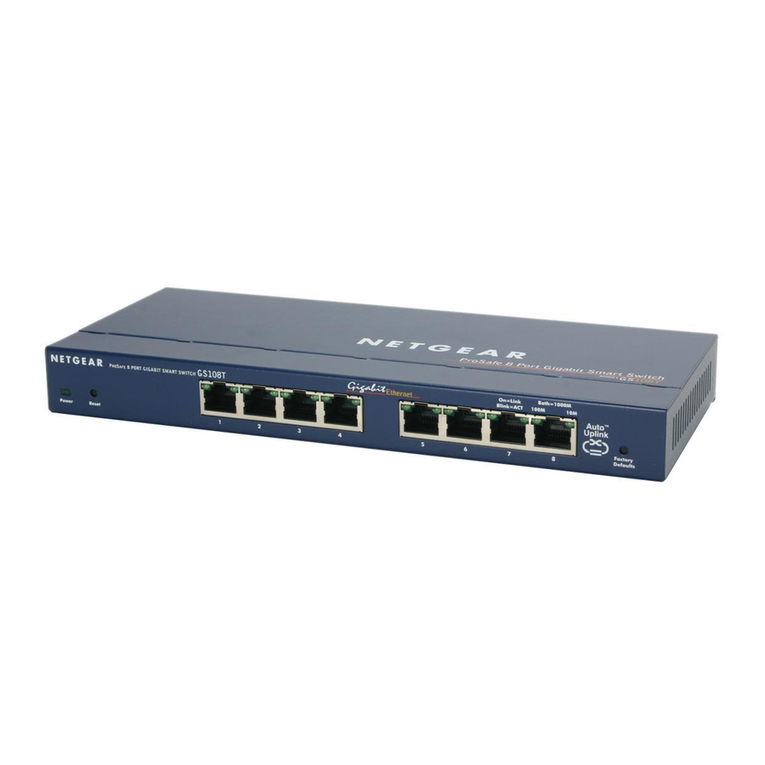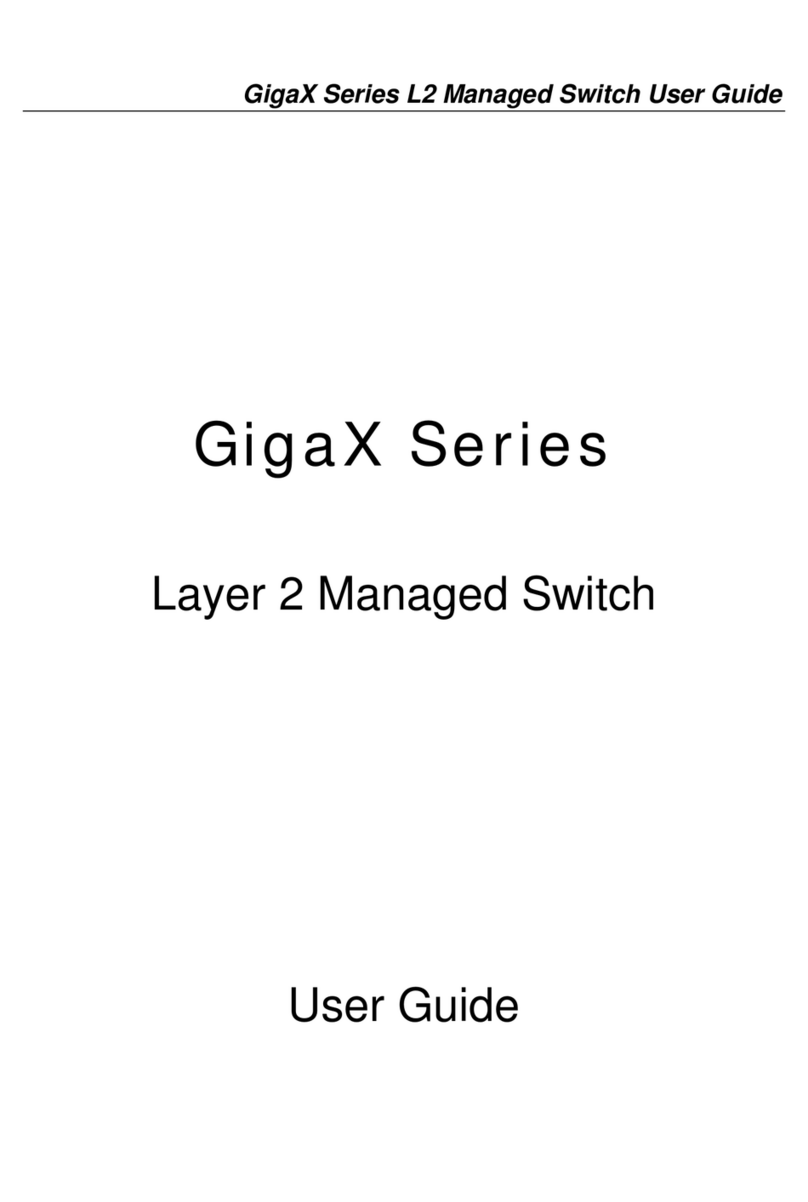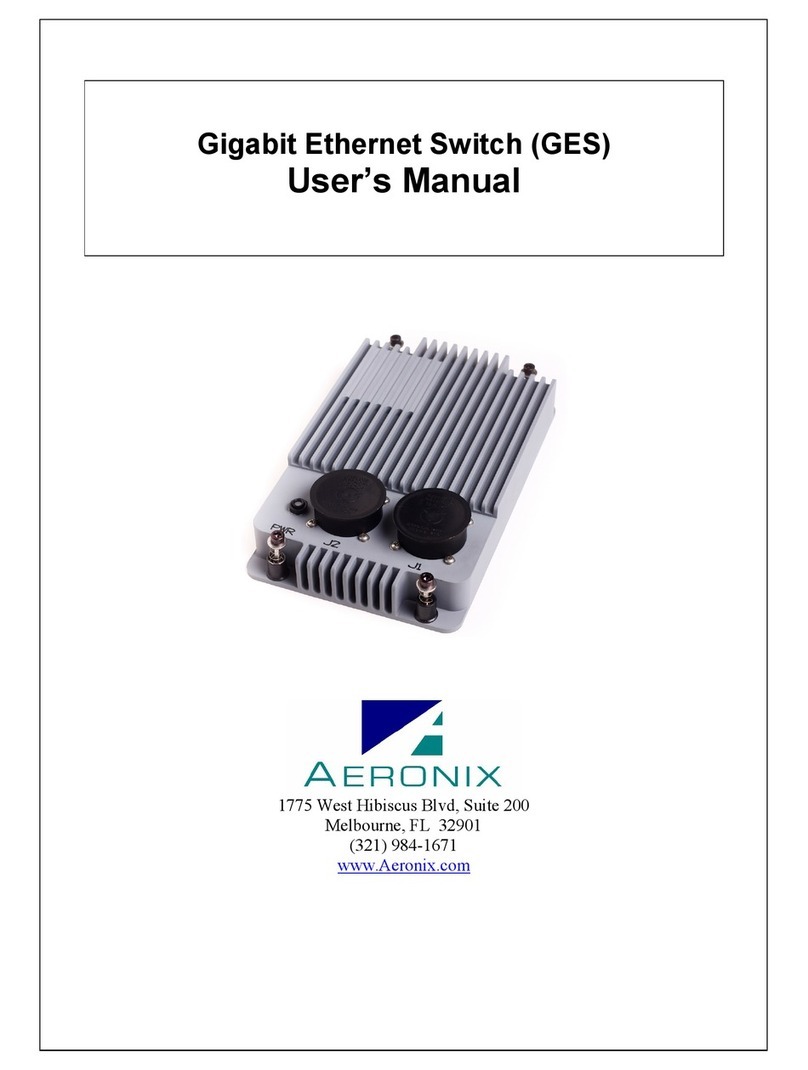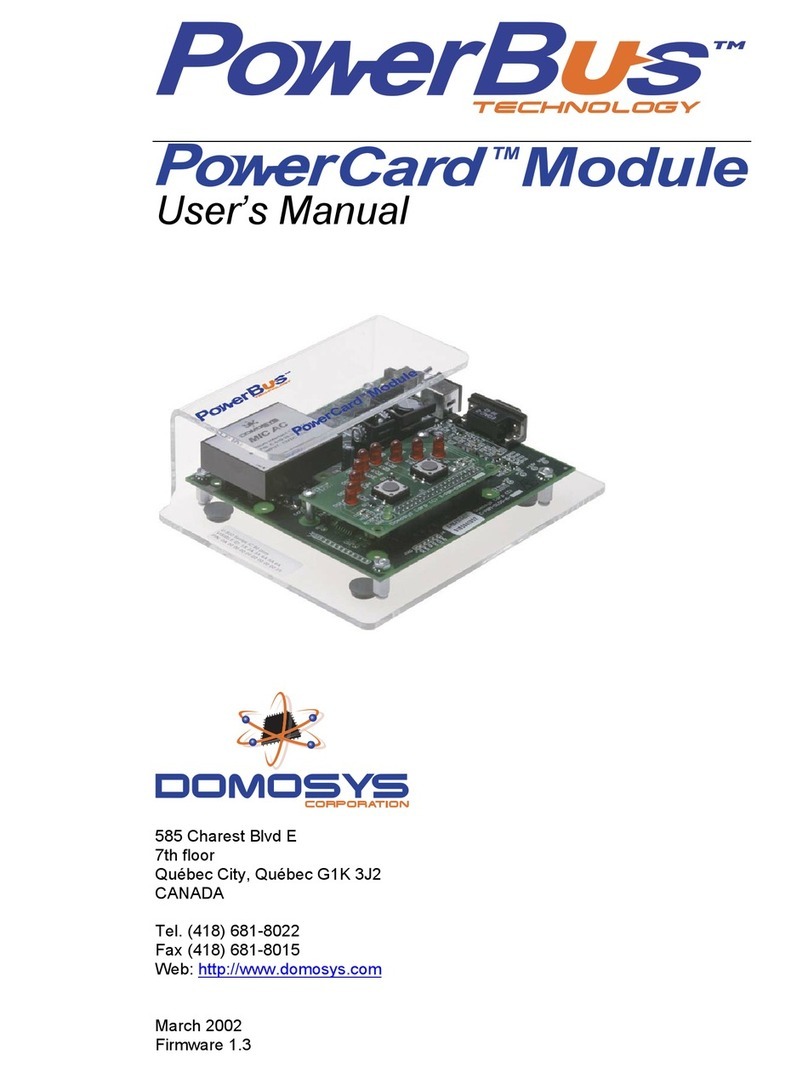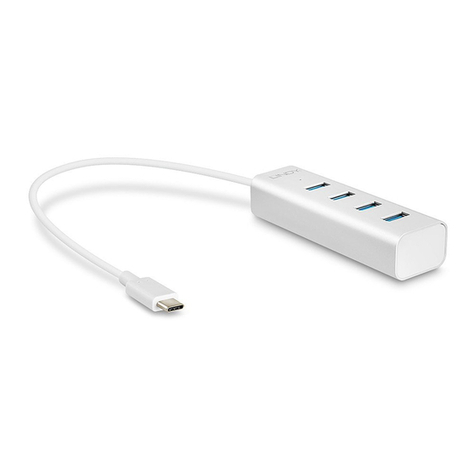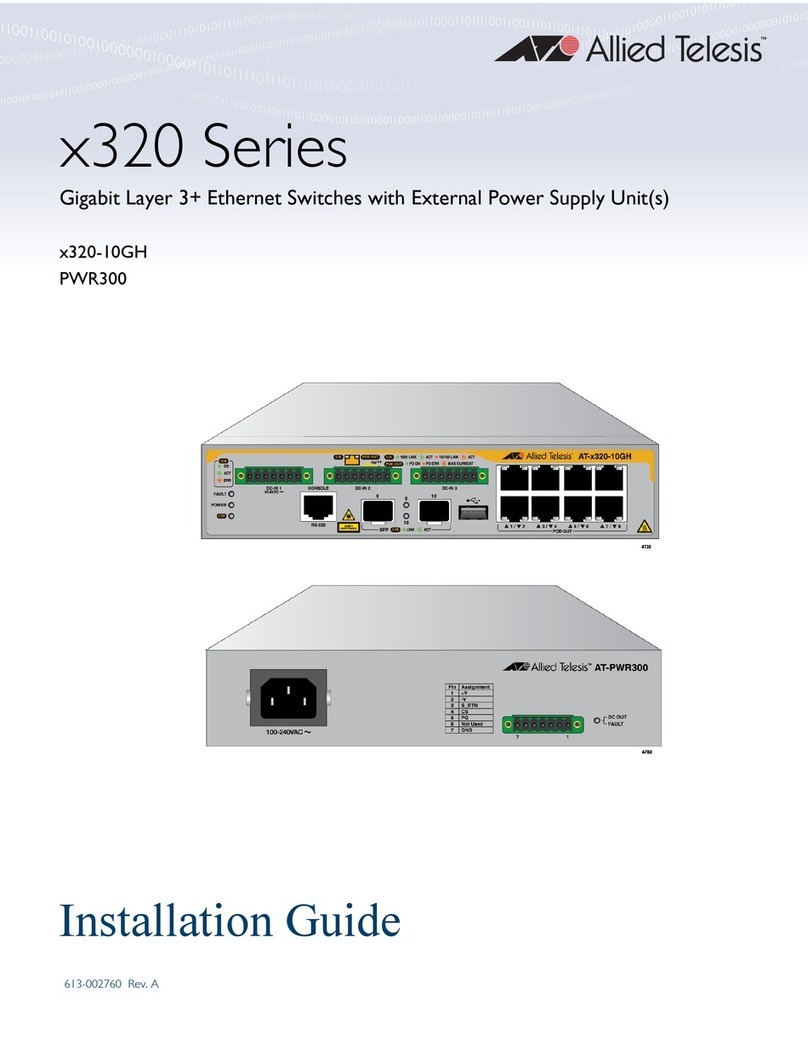Digikeijs DR4018 DIGISWITCH User manual

DR4018 DIGISWITCH (v1.34)
www.digikeijs.com Pagina / page / Seite / page 1
DR4018
DIGISWITCH
HANDLEIDING / MANUAL
BEDIENUNGSANLEITUNG / MANUEL
V1.34 (2015-05)
© Copyright 2005 – 2015 digikeijs, the Netherlands. All
rights re-served. No information, images or any part of
this document may be copied without the prior written
permission of Digikeijs.

DR4018 DIGISWITCH (v1.34)
www.digikeijs.com Pagina / page / Seite / page 2
INDEX
Nederlandse Handleiding
Pagina 4 - Beschrijving van het product
Pagina 5 - Simpele start
Pagina 6 - CV / POM Programmeren
Pagina 7 - CV Lijst
Pagina 10 - Funcemappen
Pagina 11 - Geavanceerde instellingen
English manual
Page 11 - Product descripon
Page 12 - Quick start
Page 13 - CV / POM Programming
Page 14 - CV list
Page 16 - Funconmapping
Page 17 - Advanced sengs
Bedienungsanleitung Deutsch
Seite 18 - Produktbeschreibung
Seite 19 -Schnellstart
Seite 20 -CV / POM Programmierung
Seite 21 -CV Liste
Seite 23 -Funkonsmapping
Seite 24 -erweiterten Einstellungen
Manuel français
page 25 - Descripon du produit
page 26 -Démarrage rapide
page 27 -CV’s / POM programmaon
page 28 -Liste des CV’s
page 30 -Foncon de mappage
page 31 -paramètres avancés

DR4018 DIGISWITCH (v1.34)
www.digikeijs.com Pagina / page / Seite / page 3
INDEX
Specieke Centrale instruces
Pagina 34 - Roco Z21 / Beginadres programmeren
Pagina 35 - Roco Z21 / Instellingen programmeren (POM)
Pagina 36 - Roco Mulmaus / Beginadres programmeren
Pagina 37 - Roco Mulmaus / Instellingen programmeren (POM)
Pagina 39 - Intellibox / Beginadres programmeren
Pagina 40 - Intellibox / Instellingen programmeren (POM)
Pagina 42 - LENZ LZV100 / Beginadres programmeren
Pagina 43 - LENZ LZV100 / Instellingen programmeren (POM)
Binnenkort:
Pagina 00 - Marklin CS2 / Beginadres programmeren
Pagina 00 - Marklin CS2 / Instellingen programmeren (POM)
Pagina 00 - Meedere presets tegelijk programmeren

DR4018 DIGISWITCH (v1.34)
www.digikeijs.com Pagina / page / Seite / page 4
Beschrijving van het product
De DIGISWITCH schakeldecoder is een volledig program-
meerbaar, mulprotocol schakeldecoder waarmee u al
het denkbare op uw modelspoorbaan digitaal kunt scha-
kelen. De schakeldecoder beschikt over 16 schakelbare
uitgangen waarmee u bijvoorbeeld 16 lampen of 8 wis-
sels kunt schakelen. Tevens beschikt de schakeldecoder
over meerdere presets waarmee u 4 Nederlandse drie-
licht seinen met cijferbak, maar ook Belgische en Duitse
seinbeelden kunt schakelen.
GROEP A GROEP B
12 - 18
Volt AC/DC
Centrale
Compabiliteit met verschillende centrales
Omdat geen enkele centrale hetzelfde is kunt u via onderstaande tabel controleren welke mogelijkheden u
hee met uw centrale
Type Centrale Protocol Schakelen Programmeren via
programmeerspoor
POM
Intellibox DCC / Motorola VVV
Intellibox Basic DCC / Motorola VVV
Intellibox II DCC / Motorola VVV
Marklin 6021 Motorola VXX
Marklin CS1 / CS2 Motorola VVV
ROCO/Fleischmann Multimaus DCC VXV
ROCO/Fleischmann MultimausPRO DCC VVV
LENZ DCC VVV
Tams Easy control DCC / Motorola VVV
ESU ECOS DCC / Motorola VVV
Z21 DCC / Motorola VVV
CENTRALE
UNIT
EXTERNE VOEDING
AC of DC
EXTERNE VOEDING VOEDING DOOR CENTRALE

DR4018 DIGISWITCH (v1.34)
www.digikeijs.com Pagina / page / Seite / page 5
Snelle simpele start
Doormiddel van onderstaande stappen kunt u direct aan de slag met de decoder als 8 Kanaals wisseldecoder.
De module een adres geven
Om te beginnen hee de DR4018 module een adres nodig om te kunnen communiceren met uw centrale. Stan-
daard wordt de module geleverd op adres “1” en is de module ingesteld als wisseldecoder en in DCC formaat.
Stap 1 :Sluit zowel de POWER + SIGNAL tegelijk aan op de rails of rails (track) uitgang van uw centrale.
Stap 2 :Stel uw centrale in op het begin adres dat u de module wilt geven.
Stap 3 :Druk de programmeer schakelaar op de module in totdat de rode led blij branden.
Stap 4 :Schakel nu op uw centrale het ingestelde adres.
Stap 5 :Als de module correct is aangesloten doo de led nadat u het gewenste adres hee geschakeld
Stap 6 : De eerste uitgang (OUT1) hee nu het door u gekozen adres gekregen. Alle volgende OUT uit
gangen worden standaard voorzien van 1 nummer hoger.
Voorbeeld: U programmeert de module op adres 56 waarbij OUT1 adres 56 hee gekregen,
OUT2 nummer 57 krijgt, OUT3 nummer 58 etc etc…..
Omdat de decoder mulprotocol is en DCC en Marklin Motorola ondersteund, zal het kiezen van een wisseladres
ook het protocol selecteren. Tijdens het ontvangen van het wisselcommando zoals we in bovenstaande volgorde
hebben gedaan kijkt de decoder welk protocol gebruikt wordt en slaat dit op in zijn geheugen.
BELANGRIJK!
In DCC modus kunt u ieder willekeurig beginadres nummer kiezen waarbij de module automasch de opvolgende
uitgangen op 1 ophoogt.
Het Motorola protocol werkt met groepen van 8 nummers. U kunt hierbij geen tussenadres kiezen als
beginadres. Voorbeeld: adres 1 t/m 8 of 9 t/m 16 of 17 t/m 24 etc.
De module terug naar fabriekswaarden doormiddel van POM programmering
Doormiddel van onderstaande methode zet u de module terug naar fabriekswaarden via POM programmering.
Stap 1 : Sluit de signal ingang van de decoder aan op de rails uitgang van uw centrale.
Stap 2 : Zorg ervoor dat de module spanning krijgt via de power ingang van de module.
(U kunt ook de power en signal ingang met elkaar doorverbinden)
Stap 3 : Zet uw centrale in POM programmeer stand
(meer informae over POM staat in de handleiding van uw centrale)
Stap 5 : Kies locadres 9999 op uw centrale
Stap 6 : Druk op de schakelaar van de module totdat de led gaat branden
Stap 7 : Programmeer vervolgens decimaal waarde 8 in CV8
Stap 8 : Druk op de schakelaar van de module totdat de led doo
Stap 9 : Belangrijk bij een RESET is dat de module nu even zonder spanning komt te staan.
Dus koppel de decoder op zowel de power als de signal ingang los en wacht 3 tot 5 seconden.
Stap 10: De decoder kan terug onder spanning gezet worden en staat nu weer in de fabriekswaarden.
LET OP! De decoder hee vanaf nu ook weer adres 1

DR4018 DIGISWITCH (v1.34)
www.digikeijs.com Pagina / page / Seite / page 6
Instellingen wijzigen van de decoder
Het wijzigen van instellingen zoals schakeljd of het kiezen van één van de vele presets in CV47 kan op
2 verschillende manieren die hieronder worden beschreven.
(1) CV Programmering / Uitlezing via programmeerspoor
Deze manier van programmeren is een veel gebruikte manier die vrij ingewikkeld kan zijn.
Om te beginnen moeten eerst de decoder voorbereiden doormiddel van het plaatsen van een belasngsweer-
stand van 150 of 270 Ohm op uitgang 1 zoals in de volgende aeelding geïllustreerd.
De weerstand zorgt ervoor dat er een belasng op het programmeerspoor ontstaat
die uw centrale nodig hee als bevesging dat er een module aanwezig is en ook
daadwerkelijk de programmeeropdracht van uw centrale hee ontvangen.
Helaas is geen centrale hetzelfde en kan het zijn dat de gemonteerde weerstand niet
voldoende of juist teveel belasng creëert. In dat geval dient u de handleiding van uw
centrale te raadplegen om de grote van de benodigde belasng te bepalen. In de meeste
gevallen kan het gebruik van een gloeilampje (12Volt - 60mA) de oplossing zijn.
Stap 1 : Sluit zowel power als signal ingang van de decoder aan op de rails uitgang van uw centrale.
Stap 2 : Druk de programmeer schakelaar op de module in totdat de rode led blij branden.
Stap 3 :
Stap 4 : Nu kunt u de gewenste CV’s wijzigen doormiddel van CV-byte of CV-bit programmering.
(Voor informae over CV-byte of CV-bit programmering raadpleegt u de handleiding van uw centrale)
Stap 5 : Sluit zowel power als signal ingang van de decoder aan op de rails uitgang van uw centrale.
Stap 6 : Druk de programmeer schakelaar op de module in totdat de led doo.
Stap 7 : Uw wijzigingen zijn opgeslagen en de module is klaar voor gebruik.
(2) CV Programmering via het hoofdspoor ( POM )
Een andere manier van programmeren is POM (Program On Main). Bij deze manier van programmeren kunt u de
module gewoon op de baan aansluiten zonder moeizame aansluingen of plaatsen van weerstanden zoals bij pro-
grammeren via het aparte programmeerspoor.
Stap 1 : Sluit de signal ingang van de decoder aan op de rails uitgang van uw centrale.
Stap 2 : Zorg ervoor dat de module spanning krijgt via de power ingang van de module.
(U kunt ook de power en signal ingang met elkaar doorverbinden)
Stap 3 : Zet uw centrale in POM programmeer stand
(meer informae over POM staat in de handleiding van uw centrale)
Stap 5 : Kies locadres 9999 op uw centrale
Stap 6 : Druk op de schakelaar van de module totdat de led gaat branden
Stap 7 : Programmeer vervolgens de gewenste CV’s van de module
Stap 8 : Druk op de schakelaar van de module totdat de led doo
Stap 9 : De module is direct klaar voor gebruik met de door u gewijzigde instellingen.
LET OP!!! In sommige gevallen kan het nodig zijn dat u de DR4018 module opnieuw een adres moet geven
doormiddel van ‘de module een adres geven’ op pagina 3 van deze handleiding.

DR4018 DIGISWITCH (v1.34)
www.digikeijs.com Pagina / page / Seite / page 7
#CV Definities Bereik Waarde
513 Primair adres laag 1-127 4
521 Primair adres hoog 1-127 0
7Versie van de decoder - 134
8Fabrikant-id waarde “ 8” leidt ertoe dat de fabrieksinstellingen worden ingesteld. - 42
17 Uitgebreid adres hoge byte 192-255 231
18 Uitgebreid adres lage byte 0-255 15
29 Configuratie gegevens 98
47 Voorinstellingen (CV113 t/m CV128) Alleen schrijfbaar 0 – 13 n/a
107 Donkertijd tussen de verschillende seinbeeld overgangen (duitse seinbeeld) 1-255 70
108 Waarde voor het dimmen van de seinen (nachtstand) 0-15 10
109 PWM-periode (pulsbreedte modulatie) De resolutie die door de interne PWM wordt gehanteerd voor het verwe-
zenlijken van effecten en dim-waarden
1-255 14
111 Fade-snelheid De snelheid waarmee de uitgangen die voor de fade-functie zijn geconfigureerd, infaden en uitfaden 1-255 3
112 Knippersnelheid De snelheid waarmee de uitgangen knipperen die voor knipperen zijn geconfigureerd 1-255 183
Bit Funce Standaard Waarde
5“0” = een byte adressering ( adres in CV513), “1” = twee byte addressering (Ook wel bekend als
uitgebreid adres in CV17 and CV18) “0” 32
Preset Funces Waarde Aantal
adressen
08x Wissel met spoelaandrijving 08
116x permanent aan/uit schakelaar 116
28x Tweelichtsein met fader eect 28
38x AHOB 38
42 groepen van 8x TL verlichng eect 42
51 x 16 uitgangen met TL verl. Eect 51
68x Wisselmotor aansturing 68
74x NS drielichtsein met cijferbak 716
84x DB Hoofdsein 816
94x DB Voorsein behorend bij hoofdsein 916
10 2x Combinae DB hoofdsein en DB voorsein 10 8
11 4x DB Voorsein 11 16
12 4x NMBS Sein 12 16
13 8x Wisselmotor aansturing met jdsbegrenzing 13 8
BELANGRIJK! : Deze CV is niet uitleesbaar omdat de weggeschreven waarde niet opgeslagen wordt maar de complete
decoder configureert naar de gekozen preset instelling.
CV Lijst

DR4018 DIGISWITCH (v1.34)
www.digikeijs.com Pagina / page / Seite / page 8
#CV Definities Bereik Waarde
113 Uitgangsconfiguratie 1 0-255 143
114 Uitgangsconfiguratie 2 (Voor configuratie zie CV113) 0-255 143
115 Uitgangsconfiguratie 3 (Voor configuratie zie CV113) 0-255 143
116 Uitgangsconfiguratie 4 (Voor configuratie zie CV113) 0-255 143
117 Uitgangsconfiguratie 5 (Voor configuratie zie CV113) 0-255 143
118 Uitgangsconfiguratie 6 (Voor configuratie zie CV113) 0-255 143
119 Uitgangsconfiguratie 7 (Voor configuratie zie CV113) 0-255 143
120 Uitgangsconfiguratie 8 (Voor configuratie zie CV113) 0-255 143
121 Uitgangsconfiguratie 9 (Voor configuratie zie CV113) 0-255 143
122 Uitgangsconfiguratie 10 (Voor configuratie zie CV113) 0-255 143
123 Uitgangsconfiguratie 11 (Voor configuratie zie CV113) 0-255 143
124 Uitgangsconfiguratie 12 (Voor configuratie zie CV113) 0-255 143
125 Uitgangsconfiguratie 13 (Voor configuratie zie CV113) 0-255 143
126 Uitgangsconfiguratie 14 (Voor configuratie zie CV113) 0-255 143
127 Uitgangsconfiguratie 15 (Voor configuratie zie CV113) 0-255 143
128 Uitgangsconfiguratie 16 (Voor configuratie zie CV113) 0-255 143
131 Sein 1, configuratie OUT1 t/m 4
Als deze CV’s een waarde ongelijk aan 0 bevatten schakelen de betreffende uitgangen volgens de seinregels. De ande-
re CV’s die normaal de uitgangen besturen staan buiten werking
0-50
132 Sein 2, configuratie OUT 5 t/m 8 0-50
133 Sein 3, configuratie OUT 9 t/m 12 0-50
134 Sein 4, configuratie OUT 13 t/m 16 0-50
Bit Function Standaard Waarde
0 - 3
Licht intensiteit / dimmer. Waarde 0 is complete gedimd. Waarde 15 is maximale lichtsterkte.
15 0-15
4
Fade in and Fade out effect. Waarde 0 is uit. Waarde 1 is aan. Fade snelheid is regelbaar in
CV111.016
5
Knipper effect. Waarde 0 is uit. Waarde 1 is aan. Knipper snelheid is regelbaar in CV112
032
6
Willekeurig opstarten van de lampen. Waarde 0 is uit. Waarde 1 is aan. Opstart snelheid is
regelbaar in CV111.Gecombineerd met bit 4 (fade) start het licht met een flits op waarna ze lang-
zaam opkomen. (gaslamp effect) Belangrijk: De licht intensiteit waard (bit 0-3) mag maximaal 14
zijn. 064
7
Pulse tijd Wordt ingesteld door CV238 t/m 253 waarde128, Gecombineerd met bit 5 knip-
pert de uitgang in tegengestelde fase. 0128
Preset Funces
0Geen sein
1NS (Nederlands)
2DB_HP (Duits hoofdsein)
3DB_VRHP (Duits voor en hoofdsein)
4DB_VR (Duits voorsein)
5NMBS (Belgisch)

DR4018 DIGISWITCH (v1.34)
www.digikeijs.com Pagina / page / Seite / page 9
Funcemappen uitgang 1 t/m 16
Via onderstaande tabel kunt u de verschillende uitgangen van de DR4018 module (1 t/m 16) koppelen aan de
schakeltoetsen op uw centrale. Dit kan handig zijn op het moment dat u met 1 toets meerdere uitgangen tege-
lijk zou willen schakelen. In het geval dat u meerdere uitgangen wilt schakelen op 1 funcetoets in dezelfde
groep telt u de waarden bij elkaar op.
Voorbeeld (grijs): Toets 1 moet uitgang 2 en 5 schakelen jdens de AAN stand.
U programmeert in CV141 waarde 2 + 16 = 18
Voorbeeld 2 (zwart): Toets 10 moet uitgang 1 en uitgang 15 schakelen jdens de AAN stand.
U programmeert in CV195 waarde 1 en in CV196 waarde 64
CV
(A)
UITGANGEN GROEP A ( 1 t/m 8 ) en GROEP B ( 9 t/m 16 )
Stand CV
(B) 1 | 92 | 10 3 | 11 4 | 12 5 | 13 6 | 14 7 | 15 8 | 16
Toets 1 AAN 141 124816 32 64 128142
UIT 144 124816 32 64 128145
Toets 2 AAN 147 124816 32 64 128148
UIT 150 124816 32 64 128151
Toets 3 AAN 153 124816 32 64 128154
UIT 156 124816 32 64 128157
Toets 4 AAN 159 124816 32 64 128160
UIT 162 124816 23 64 128163
Toets 5 AAN 165 124816 32 64 128166
UIT 168 124816 32 64 128169
Toets 6 AAN 171 124816 32 64 128172
UIT 174 124816 32 64 128175
Toets 7 AAN 177 124816 32 64 128178
UIT 180 124816 32 64 128181
Toets 8 AAN 183 124816 32 64 128184
UIT 186 124816 32 64 128187
Toets 9 AAN 189 124816 32 64 128190
UIT 192 124816 32 64 128193
Toets 10 AAN 195 124816 32 64 128196
UIT 198 124816 32 64 128199
Toets 11 AAN 201 124816 32 64 128202
UIT 204 124816 32 64 128205
Toets 12 AAN 207 124816 32 64 128208
UIT 210 124816 32 64 128211
Toets 13 AAN 213 124816 32 64 128214
UIT 216 124816 32 64 128217
Toets 14 AAN 219 124816 32 64 128220
UIT 222 124816 32 64 128223
Toets 15 AAN 225 124816 32 64 128226
UIT 228 124816 32 64 128229
Toets 16 AAN 231 124816 32 64 128232
UIT 234 124816 32 64 128235
* De ROOD gekleurde getallen zijn de standaard fabriekswaarden voor GROEP A ( 1 t/m 8 )
* De ORANJE gekleurde getallen zijn de standaard fabriekswaarden voor GROEP B ( 9 t/m 16 )

DR4018 DIGISWITCH (v1.34)
www.digikeijs.com Pagina / page / Seite / page 10
Sein funcemappen uitgang (EXPERT)
Via onderstaande tabel zijn de verschillende sein nummers gekoppeld aan uitgangsgroepen. Het wijzigen van
deze congurae kan handig zijn op het moment dat u zowel seinen als wissels gecombineerd gaat aanstruren
met dezelfde module.
CV UITGANGEN
1 –4 5—8 9-12 13-16
SEIN 1 143 1248
SEIN 2 167 1248
SEIN 3 191 1248
SEIN 4 215 1248
Uitgang pulsjden
Met onderstaande CV’s kunt u de pulsduur van de uitgangen 1 t/m 16instellen mits deze op puls ingesteld staat
CV113=7 en CV47=13.
CV CV Definities Range Value
238 Pulsduur UITGANG 1 0-255 128
239 Pulsduur UITGANG 2 0-255 128
240 Pulsduur UITGANG 3 0-255 128
241 Pulsduur UITGANG 4 0-255 128
242 Pulsduur UITGANG 5 0-255 128
243 Pulsduur UITGANG 6 0-255 128
244 Pulsduur UITGANG 7 0-255 128
245 Pulsduur UITGANG 8 0-255 128
246 Pulsduur UITGANG 9 0-255 128
247 Pulsduur UITGANG 10 0-255 128
248 Pulsduur UITGANG 11 0-255 128
249 Pulsduur UITGANG 12 0-255 128
250 Pulsduur UITGANG 13 0-255 128
251 Pulsduur UITGANG 14 0-255 128
252 Pulsduur UITGANG 15 0-255 128
253 Pulsduur UITGANG 16 0-255 128
Seinbeelden
De combinatie van de drie eerste adressen bepaalt 1 van de 8 mogelijke seinbeelden. Het 4e adres schakelt de (nacht)
dimstand in.
R = Rode knop op uw centrale
G = Groene knop op uw centrale
Adres Seinbeeld
1e2e3eNS 3-lichts met cijferbak DB HP DB VR-Combi DB VR NMBS
RRR0Rood HP0 Gedoofd VR0 Rood
GRR1Groen HP1 VR0 VR1 Rood knipper
RGR2Geel HP2 VR0 VR2 Dubbel Geel
GGR3Groen-knipper met Cijfer SH1 Gedoofd Gedoofd Dubbel Geel knipper
RRG4Geel met Cijfer HP1 VR1 VR0 Groen Geel Horizont.
GRG5Groen-knipper HP2 VR1 VR1 Groen
RGG6Geel-knipper HP1 VR2 VR2 Groen knipper
GGG7Geel met Cijfer-knipper HP2 VR2 Gedoofd Groen Geel Verticaal

DR4018 DIGISWITCH (v1.34)
www.digikeijs.com Pagina / page / Seite / page 11
Product descripon
The DIGISWITCH switching decoder is a fully programma-
ble, mul-protocol switching decoder that can digitally
switch anything imaginable on your model railway. The
switching decoder has 16 switchable outlets which can,
for example, switch 16 lights or 8 sets of points. The
switching decoder has several presets that enable you to
switch four Dutch three-light signals with number
boards. Belgian and German signal aspects can also be
switched.
GROUP A GROUP B
12 - 18
Volt AC/DC
Central
Compability with dierent control units
Because no two control units are the same, use the table below to see what opons you have with your unit.
Control unit type Protocol Switching Programming via
programming track
POM
Intellibox DCC / Motorola VVV
Intellibox Basic DCC / Motorola VVV
Intellibox II DCC / Motorola VVV
Marklin 6021 Motorola VXX
Marklin CS1 / CS2 Motorola VVV
ROCO/Fleischmann Multimaus DCC VXV
ROCO/Fleischmann MultimausPRO DCC VVV
LENZ DCC VVV
Tams Easy control DCC / Motorola VVV
ESU ECOS DCC / Motorola VVV
Z21 DCC / Motorola VVV
CONTROL
UNIT
EXTERNAL FEED
AC or DC
EXTERNAL FEED FEED FROM CONTROL UNIT

DR4018 DIGISWITCH (v1.34)
www.digikeijs.com Pagina / page / Seite / page 12
Quick start
Follow these steps to start using your decoder as an 8-channel switching decoder straight away.
Give the module an address
The DR4018 module rst needs an address to be able to communicate with your control unit.
The module comes as standard with address “1” and set up as a switching decoder using DCC format.
Step 1 :Connect both the POWER + SIGNAL to the rails or tracks output on your control unit.
Step 2 :Set your control unit to the starng address you want to give the module.
Step 3 :Press the program buon on the module unl the red LED remains on.
Step 4 :Now switch your control unit to the selected address.
Step 5 :If the module is connected correctly, the LED will go o when you select the address.
Step 6 : The rst output (OUT1) has now received the selected address. All subsequent OUT outputs are
given an address 1 number higher.
Example: The module is programmed to address 56. OUT1 is given the address 56, OUT2 gets
address 57, OUT3 number 58 etc.
Because the decoder is mulprotocol and supports DCC and Marklin Motorola, selecng a switching address
should also select the protocol. When the decoder receives a switching command as per the steps above, the de-
coder idenes which protocol was used and stores this in its memory.
IMPORTANT!
In DCC mode you can select any starng address and the module will automacally give the subsequent outputs
an address that is one higher.
The Motorola protocol works with groups of 8 numbers. This means you cannot chose a starng address from
within a block. For example: address 1 through 8, 9 through 16, 17 through 24 etc.
Reset the module to factory sengs using POM programming
Use this method to reset the module to factory sengs using POM programming.
Step 1 : Connect the signal input on the decoder to the rails output on your control unit.
Step 2 : Ensure the module is receiving power via the module’s power input.
(You can also connect the power and signal inputs to each other)
Step 3 : Set your control unit to POM programming mode.
(You can nd more informaon about the POM mode in your control unit’s manual)
Step 5 : Choose local address 9999 on your control unit.
Step 6 : Press the buon on the module unl the LED goes on.
Step 7 : Then program decimal value 8 in CV8.
Step 8 : Press the buon on the module unl the LED goes out.
Step 9 : It is important when carrying out a RESET that the module is now disconnected from the power.
Disconnect both the power and the signal inputs and wait for 3 to 5 seconds.
Step 10: The decoder can now be reconnected to the power and will have returned to the factory sengs.
BE CAREFUL! The decoder now has address 1 again.

DR4018 DIGISWITCH (v1.34)
www.digikeijs.com Pagina / page / Seite / page 13
Modify the decoder’s sengs
There are two ways of changing the decoder’s sengs and/or switching me, or chosing one of the many presets
in CV47. They are described below.
(1) CV Programming / reading through the programming track
This common way of programming can become rather complicated.
The decoder must rst be prepared by placing a 150—270 Ohm resistor on output 1 as shown in the diagram.
The resistor ensures that there is a resistance on the programming track, which your
control unit requires as conrmaon that a module is present and that the
programming commands have been received from the control unit.
Unfortunately, no two control units are the same and it is possible that the aached resistor
does not provide enough, or provides too much, resistance. If this happens,
consult your control unit’s manual to nd out what resistance is required. In most cases
using a bulb (12 Volt—60 mA) works well.
Step 1 : Connect both the power and signal inputs on the decoder to the rails output on your control unit.
Step 2 : Press the program buon on the module unl the red LED stays on.
Step 3 : Now connect both the power and signal input on the decoder to the program output on your control
unit.
Step 4 : You can now modify the CVs using CV byte or CV bit programming.
(For informaon about CV byte or CV bit programming, please consult your control unit’s manual)
Step 5 : Connect both the power and signal inputs on the decoder to the rails output on your control unit.
Step 6 : Press the program buon on the module unl the LED goes out.
Step 7 : Your modicaons have been saved and the module is ready for use.
(2) CV Programming via the main track (POM)
An alternave way of programming is POM (Program On Main). This method of programming allows you to con-
nect the module directly to the track without the diculty of aaching a resistor, as is required when program-
ming via a separate programming track.
Step 1 : Aach the signal input on the decoder to the rails output on your control unit.
Step 2 : Ensure the module is receiving power via the module’s power input.
(You can also connect the power and signal inputs to each other)
Step 3 : Set your control unit to POM programming mode.
(You can nd more informaon about the POM mode in your control unit’s manual)
Step 5 : Choose local address 9999 on your control unit.
Step 6 : Press the buon on the module unl the LED goes on.
Step 7 : Now program the desired CVs for the module.
Step 8 : Press the buon on the module unl the LED goes out.
Step 9 : The module is ready for immediate use with the modied sengs.
BE CAREFUL! In some cases the DR4018 must be given a new address by following the steps in the ‘Give the mo-
dule an address’ secon on page 3 of this manual.

DR4018 DIGISWITCH (v1.34)
www.digikeijs.com Pagina / page / Seite / page 14
#CV Definition Range Value
513 Primary Address Low 1-127 4
521 Primary Address High 1-127 0
7Version of the decoder - 134
8Manufacturer ID Writing the value “8” will reset the decoder to it’s factory settings - 42
17 Extended Address high byte 192-255 231
18 Extended Address low byte 128-255 15
29 Configuration Data 98
47 Presets (CV113 through CV128) WRITE ONLY 0 – 13 n/a
107 Dark time between signal transitions 1-255 70
108 Value to dim intensity of signal (night mode) 0-15 10
109 PWM Period The resolution with which the internal PWM operates to achieve effects and dim -values 1-255 14
111 Fade Speed The speed with which the outputs configured for fading will fade in and fade out 1-255 3
112 Blink rate The speed with which the outputs configured for blinking will blink 1-255 183
Bit Funcon Default Value
5
“0” = one byte addressing ( address in
CV1), “1” = two byte addressing (also
known as extended addressing, ad-
dress in CV17 and 18)
“0” 32
Preset Funcon Value No. of
addresses
08x Turnout with twin-coil motor 08
116x permanent on/o switch 116
28x two-light signal with fade eect 28
38x AHOB 38
42 groups with 8x Fluorescent lamp 42
51 x 16 output with Fluorescent lamp 51
68x Turnout motor control 68
74x Dutch three-light signal 716
84x DB Main signal 816
94x DB pre-signal associated with main signal 916
10 2x Combinaon of DB Main signal and pre-signal 10 8
11 4x DB Pre-signal 11 16
12 4x NMBS Main signal 12 16
13 8x Turnout control with me limit 13 8
IMPORTANT! : This CV is not readable as entered values will not be stored, rather the entire decoder will be configured
according to the preset selected..
CV List

DR4018 DIGISWITCH (v1.34)
www.digikeijs.com Pagina / page / Seite / page 15
#CV Definition Range Value
113 Output Configuration 1 0-255 143
114 Output Configuration 2 (For configuration bits see CV113) 0-255 143
115 Output Configuration 3 (For configuration bits see CV113) 0-255 143
116 Output Configuration 4 (For configuration bits see CV113) 0-255 143
117 Output Configuration 5 (For configuration bits see CV113) 0-255 143
118 Output Configuration 6 (For configuration bits see CV113) 0-255 143
119 Output Configuration 7 (For configuration bits see CV113) 0-255 143
120 Output Configuration 8 (For configuration bits see CV113) 0-255 143
121 Output Configuration 9 (For configuration bits see CV113) 0-255 143
122 Output Configuration 10 (For configuration bits see CV113) 0-255 143
123 Output Configuration 11 (For configuration bits see CV113) 0-255 143
124 Output Configuration 12 (For configuration bits see CV113) 0-255 143
125 Output Configuration 13 (For configuration bits see CV113) 0-255 143
126 Output Configuration 14 (For configuration bits see CV113) 0-255 143
127 Output Configuration 15 (For configuration bits see CV113) 0-255 143
128 Output Configuration 16 (For configuration bits see CV113) 0-255 143
131 Signal 1, configuration OUT 1 - 4
If these CVs contain a value equal to 0 all outputs will switch according to the signal rules. The other CVs that normal-
ly control the outputs will be deactivated.
0-50
132 Signal 2, configuration OUT 5 - 8 0-50
133 Signal 3, configuration OUT 9 - 12 0-50
134 Signal 4, configuration OUT 13 - 16 0-50
Bit Function Default Value
0 - 3
Intensity of the output. Also called dimmer. Where 0 is completely
off and 15 completely on. 15 0-15
4
Fade in and fade out effect. "0" = no fading "1" = fading active.
Fade speed is controlled by CV111 016
5
Blink effect. "0" = no blinking "1" = blinking active. Blink rate is
controlled by CV112 032
6
Random effect. " 0" = random off " 1" = random active. Combined
with bit 4 (fade) the lights start with a flash, after which they slowly fade
in. Note: The intensity value should be max. 14 for this effect to work.
064
7
Pulse length. is set via CV 121 through 128, when combined with
bit 5 the output blinks, but with inverted phase 0128
Preset Funcon
0No Signal
1Dutch (railways)
2DB_HP (German main signal)
3DB_VRHP (German front and main signal)
4DB_VR (German front signal)
5NMBS (Belgium railways)

DR4018 DIGISWITCH (v1.34)
www.digikeijs.com Pagina / page / Seite / page 16
Funcon mapping outputs 1 through 16
This table shows you how to connect the dierent outputs on the DR4018 module (1 through 16) to the swit-
ching keys on your control unit. This is useful when you want to switch more than one output at the same me
with one key. If you want to switch more than one output with one funcon key in the same group then add the
values together.
Example 1 (grey): Key 1 should switch outputs 2 and 5 when ON.
You program: CV141 values 2 + 16 = 18.
Example 2 (black): Key 10 should switch ouputs 1 and 15 when ON.
You program: CV195 value 1 and CV196 value 64.
CV
(A)
OUTPUTS GROUP A ( 1 through 8 ) and GROUP B ( 9 through 16 )
Status CV
(B) 1 | 92 | 10 3 | 11 4 | 12 5 | 13 6 | 14 7 | 15 8 | 16
Key 1 ON 141 124816 32 64 128142
OFF 144 124816 32 64 128145
Key 2 ON 147 124816 32 64 128148
OFF 150 124816 32 64 128151
Key 3 ON 153 124816 32 64 128154
OFF 156 124816 32 64 128157
Key 4 ON 159 124816 32 64 128160
OFF 162 124816 23 64 128163
Key 5 ON 165 124816 32 64 128166
OFF 168 124816 32 64 128169
Key 6 ON 171 124816 32 64 128172
OFF 174 124816 32 64 128175
Key 7 ON 177 124816 32 64 128178
OFF 180 124816 32 64 128181
Key 8 ON 183 124816 32 64 128184
OFF 186 124816 32 64 128187
Key 9 ON 189 124816 32 64 128190
OFF 192 124816 32 64 128193
Key 10 ON 195 124816 32 64 128196
OFF 198 124816 32 64 128199
Key 11 ON 201 124816 32 64 128202
OFF 204 124816 32 64 128205
Key 12 ON 207 124816 32 64 128208
OFF 210 124816 32 64 128211
Key 13 ON 213 124816 32 64 128214
OFF 216 124816 32 64 128217
Key 14 ON 219 124816 32 64 128220
OFF 222 124816 32 64 128223
Key 15 ON 225 124816 32 64 128226
OFF 228 124816 32 64 128229
Key 16 ON 231 124816 32 64 128232
OFF 234 124816 32 64 128235
* The RED numbers are the standard factory sengs for GROUP A (1 through 8)
* The ORANGE numbers are the standard factory sengs for GROUP B ( 9 through 16 )

DR4018 DIGISWITCH (v1.34)
www.digikeijs.com Pagina / page / Seite / page 17
Signal funcon mapping output (EXPERT)
This table shows how the dierent signal numbers are coupled to output groups. It can be useful to change this
conguraon when you want to control both signals and points with the same module.
CV OUTPUTS
1 –4 5—8 9-12 13-16
SIGNAL 1 143 1248
SIGNAL 2 167 1248
SIGNAL 3 191 1248
SIGNAL 4 215 1248
Output pulse mes
Use these CVs to congure the pulse duraon for outputs 1 through 16 provided they are set to pulse CV113=7
and CV47=13.
CV CV Definition Range Value
238 Pulse time OUTPUT 1 0-255 128
239 Pulse time OUTPUT 2 0-255 128
240 Pulse time OUTPUT 3 0-255 128
241 Pulse time OUTPUT 4 0-255 128
242 Pulse time OUTPUT 5 0-255 128
243 Pulse time OUTPUT 6 0-255 128
244 Pulse time OUTPUT 7 0-255 128
245 Pulse time OUTPUT 8 0-255 128
246 Pulse time OUTPUT 9 0-255 128
247 Pulse time OUTPUT 10 0-255 128
248 Pulse time OUTPUT 11 0-255 128
249 Pulse time OUTPUT 12 0-255 128
250 Pulse time OUTPUT 13 0-255 128
251 Pulse time OUTPUT 14 0-255 128
252 Pulse time OUTPUT 15 0-255 128
253 Pulse time OUTPUT 16 0-255 128
Address Signal aspect
1e2e3eNS 3 lights with digit board DB HP DB VR-Combi DB VR NMBS
RRR0Red HP0 Off VR0 Red
GRR1Green HP1 VR0 VR1 Flashing red
RGR2Yellow HP2 VR0 VR2 Double yellow
GGR3Flashing green with digit SH1 Off Off Flash double yellow
RRG4Yellow with digit HP1 VR1 VR0 Green yellow horiz.
GRG5Flashing green HP2 VR1 VR1 Green
RGG6Flashing yellow HP1 VR2 VR2 Flashing green
GGG7Yellow with flashing digit HP2 VR2 Off Green yellow vertical
Signal aspects
The combination of the first three addresses determines 1 of 8 possible signal aspects. The fourth address activates (night)
dimming.
R = Red button on your control unit
G = Green button on your control unit

DR4018 DIGISWITCH (v1.34)
www.digikeijs.com Pagina / page / Seite / page 18
Produktbeschreibung
Der DIGISWITCH Schaltdecoder ist ein voll program-
mierbarer Mulprotokoll-Schaltdecoder, der auf digita-
le Weise alles, was Sie sich nur vorstellen können, auf
Ihrer Modelleisenbahn schalten kann. Der Schaltdeco-
der hat 16 verstellbare Ausgänge, die zum Beispiel zwi-
schen 16 Lichtern oder 8 Weichen schalten können.
Der Schaltdecoder hat mehrere Einstellungen, mit de-
nen man vier niederländische drei-Licht Signale mit di-
gitaler Anzeigetafel betägen kann. Man kann damit
auch belgische oder deutsche Signalaspekte betägen.
GRUPPE A GRUPPE B
12 - 18
Volt AC/DC Zentral
Kompabilität mit verschiedenen Kontrolleinheiten
Kontrolleinheiten sind alle unterschiedlich. Mit Hilfe der folgenden Tabelle können Sie die Oponen für Ihre Ein-
heit ermieln.
Kontrolleinheitstyp Protokoll Schaltung Programmierung durch
Programmiergleis
POM
Intellibox DCC / Motorola VVV
Intellibox Basic DCC / Motorola VVV
Intellibox II DCC / Motorola VVV
Marklin 6021 Motorola VXX
Marklin CS1 / CS2 Motorola VVV
ROCO/Fleischmann Multimaus DCC VXV
ROCO/Fleischmann MultimausPRO DCC VVV
LENZ DCC VVV
Tams Easy control DCC / Motorola VVV
ESU ECOS DCC / Motorola VVV
Z21 DCC / Motorola VVV
KONTROLL-
EINHEIT
EXTERNE EINSPEIS-
UNG AC oder DC
EXTERNE EINSPEISUNG
EINSPEISUNG DURCH
KONTROLLEINHEIT

DR4018 DIGISWITCH (v1.34)
www.digikeijs.com Pagina / page / Seite / page 19
Schnellstart
Befolgen Sie diese Schrie, um Ihren Decoder sofort als 8-fachen Schaltdecoder zu verwenden.
Besmmen Sie eine Adresse für das Modul
Als erstes braucht das DR4018 Modul eine Adresse, um mit Ihrer Kontrolleinheit kommunizieren zu können.
Das Modul hat standardmäßig die Adresse “1” und ist als Wechseldecoder in DCC Format eingestellt.
Schri 1 :Verbinden Sie sowohl POWER + SIGNAL mit dem Schienenausgang Ihrer Kontrolleinheit.
Schri 2 :Stellen Sie die Kontrolleinheit auf die gewünschte Startadresse ein.
Schri 3 :Drücken Sie auf den Programmknopf des Moduls bis die rote LED Leuchte an bleibt.
Schri 4 :Schalten Sie die Kontrolleinheit nun auf die gewünschte Adresse.
Schri 5 :Bei richger Verbindung des Moduls, geht die LED Leuchte aus, sobald Sie eine Adresse wählen.
Schri 6 : Der erste Ausgang (OUT1) hat nun die ausgewählte Adresse erhalten. Alle weiteren Ausgänge
erhalten eine Adresse, die eine Nummer höher ist.
Beispiel: Das Modul ist mit der Adresse 56 programmiert. OUT1 erhält also die Adresse 56,
OUT2 erhält die Adresse 57, OUT3 Adresse 58 usw.
Weil der Decoder mulprotokoll ist und sowohl DCC als auch Marklin Motorola unterstützt, sollte bei der Wahl
einer Schaltadresse auch ein Protokoll ausgewählt werden. Wenn der Decoder nach den oben genannte Schrien
ein Schaltkommando enthält, ermielt der Decoder welches Protokoll gewählt wurde und speichert diese Einstel-
lung.
WICHTIG!
Im DCC Modus können Sie eine beliebige Startadresse wählen und das Modul programmiert dann automasch
den folgenden Ausgang mit einer Adresse, die eine Nummer höher ist.
Das Motorola Protokoll funkoniert mit Gruppierungen von 8 Nummern. Dies bedeutet, dass Sie eine Adresse am
Anfang einer Gruppierung wählen müssen. Gruppierungen sind z.B.: Adressen 1 bis 8, 9 bis 16, 17 bis 24 etc.
Mit POM Programmierung auf Werkeinstellungen zurücksetzen
So können Sie das Modul mit Hilfe der POM Programmierung auf die Werkeinstellungen zurücksetzen.
Schri 1 : Verbinden Sie den Signaleingang des Decoders mit dem Gleisausgang der Kontrolleinheit.
Schri 2 : Stellen Sie sicher, dass das Modul über den Stromeingang mit Strom versorgt wird.
(Sie können die Strom– und Signaleingänge auch miteinander verbinden)
Schri 3 : Stellen Sie die Kontrolleinheit auf POM Programmierungsmodus ein.
(Weitere Informaonen zum POM Modus nden Sie im Handbuch Ihrer Kontrolleinheit)
Schri 5 : Wählen Sie die lokale Adresse 9999 auf Ihrer Kontrolleinheit aus.
Schri 6 : Drücken Sie auf den Knopf des Moduls, bis die LED Leuchte sich einschaltet.
Schri 7 : Programmieren Sie dann den Dezimalwert 8 in CV8 ein.
Schri 8 : Drücken Sie auf den Knopf des Moduls bis die LED Leuchte sich ausschaltet.
Schri 9 : Wenn Sie einen RESET durchführen, dann ist es wichg, dass das Modul an dieser Stelle von der
Stromversorgung getrennt wird. Trennen Sie den Strom– und den Signaleingang und warten Sie 3 bis
5 Sekunden.
Schri 10: Der Decoder kann nun wieder angeschlossen werden und wird auf den Werkzustand zurückgesetzt
worden sein.
ACHTUNG! Der Decoder hat nun wieder die Adresse 1.

DR4018 DIGISWITCH (v1.34)
www.digikeijs.com Pagina / page / Seite / page 20
Änderungen der Decoder Einstellungen
Man kann auf zwei Weisen die Einstellungen und/oder Schaltzeiten des Decoders ändern, oder eine der vielen
Voreinstellungen in CV47 auswählen. Diese beiden Methoden werden hier beschrieben.
(1) CV Programmierung / Lesen am Programmiergleis
Diese geläuge Art der Programmierung kann ziemlich kompliziert werden.
Als erstes muss der Decoder vorbereitet werden, indem ein 150—270 Ohm Widerstand an den Ausgang 1 ange-
schlossen wird, wie im Diagramm gezeigt.
Der Widerstand sorgt dafür, dass es einen Widerstand am Programmiergleis gibt.
Dies benögt die Kontrolleinheit als Bestägung, dass das Modul vorhanden ist und
dass die Programmiervorgaben von der Kontrolleinheit erhalten worden sind.
Leider sind alle Kontrolleinheiten unterschiedlich und es kann also sein, dass der ange-
schlossenen Widerstand nicht genug, oder zu viel Widerstand leistet. Wenn dies der
Fall ist, dann prüfen Sie im Handbuch Ihrer Kontrolleinheit nach welcher Widerstand be-
nögt wird. In den meisten Fällen kann man auch eine Glühbirne (12 Volt—60 mA) verwenden.
Schri 1 : Verbinden Sie den Strom– und Signaleingang des Decoders mit dem Gleisausgang der Kontrolleinheit.
Schri 2 : Drücken Sie auf den Knopf des Moduls, bis die LED Leuchte an bleibt.
Schri 3 : Verbinde Sie nun sowohl den Strom– als auch den Signaleingang des Decoders mit dem Programm-
ausgang Ihrer Kotrolleinheit.
Schri 4 : Sie können nun CVs ändern, mit CV Byte oder CV Bit Programmierung.
(Weitere Informaonen zu CV Byte oder CV Bit Programmierung nden Sie im Handbuch Ihrer Kontroll-
einheit)
Schri 5 : Verbinden Sie sowohl Strom– als auch Signaleingang des Decoders mit dem Gleisausgang Ihrer Kon-
trolleinheit.
Schri 6 : Drücken Sie auf den Programmknopf des Moduls, bis die LED Leuchte sich ausschaltet.
Schri 7 : Ihre Änderungen sind nun gespeichert und das Modul ist einsatzbereit.
(2) CV Programmierung durch Hauptgleis (POM)
Eine andere Möglichkeit der Programmierung ist POM (Program On Main). Durch diese Programmiermethode
können Sie das Modul direkt an das Gleis anschließen, ohne vorher einen Widerstand anschließen zu müssen, wie
man es bei der Programmierung über ein separates Programmiergleis tun muss.
Schri 1 : Verbinden Sie den Signaleingang des Decoders mit dem Gleisausgang Ihrer Kontrolleinheit.
Schri 2 : Stellen Sie sicher, dass das Modul über den Stromeingang mit Strom versorgt wird.
(Sie können die Strom– und Signaleingänge auch miteinander verbinden)
Schri 3 : Stellen Sie die Kontrolleinheit auf POM Programmierungsmodus ein.
(Weitere Informaonen zum POM Modus nden Sie im Handbuch Ihrer Kontrolleinheit)
Schri 5 : Wählen Sie die lokale Adresse 9999 auf Ihrer Kontrolleinheit aus.
Schri 6 : Drücken Sie auf den Knopf des Moduls, bis die LED Leuchte sich einschaltet.
Schri 7 : Programmieren Sie nun die gewünschten CVs für das Modul.
Schri 8 : Drücken Sie auf den Knopf des Moduls bis die LED Leuchte sich ausschaltet.
Schri 9 : Das Modul ist nun bereit für den soforgen Einsatz mit den gewünschten Einstellungen.
ACHTUNG! In manchen Fällen benögt das DR4018 eine neue Adresse. Befolgen Sie hierzu die Schrie die unter
„Besmmen Sie eine Adresse für das Modul“ auf Seite 3 dieses Handbuchs beschrieben sind.
Other manuals for DR4018 DIGISWITCH
3
Table of contents
Languages:
Other Digikeijs Switch manuals
Popular Switch manuals by other brands
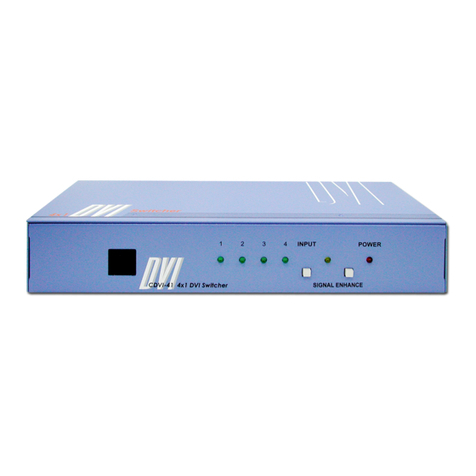
Cypress
Cypress SE-DVI-4-LC Operation manual
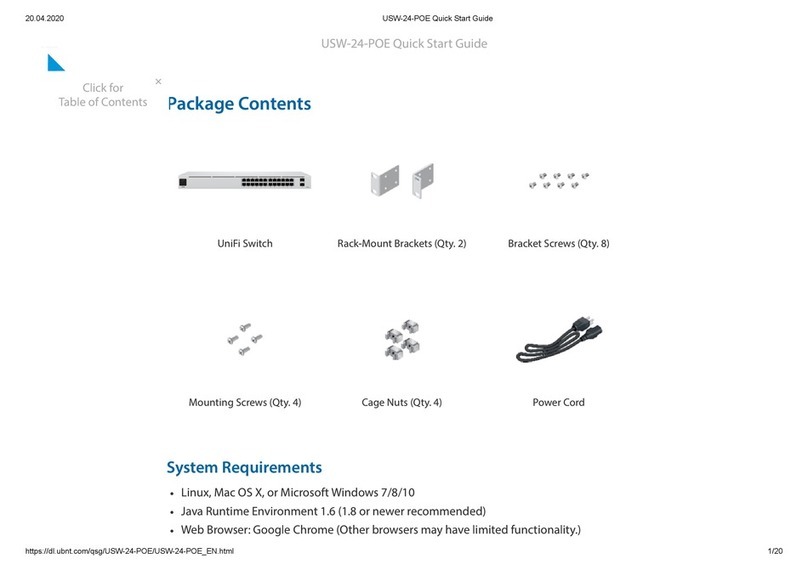
Ubiquiti
Ubiquiti UniFi USW-24-POE quick start guide
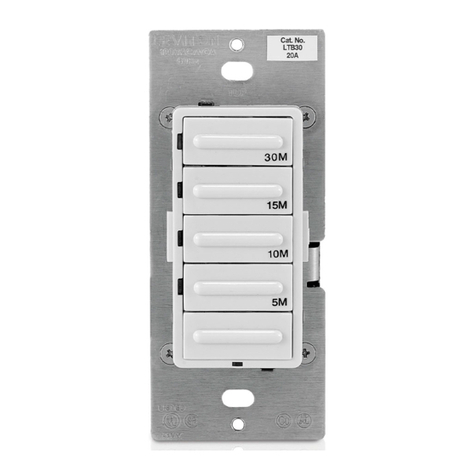
Leviton
Leviton DECORA LTB02 installation instructions
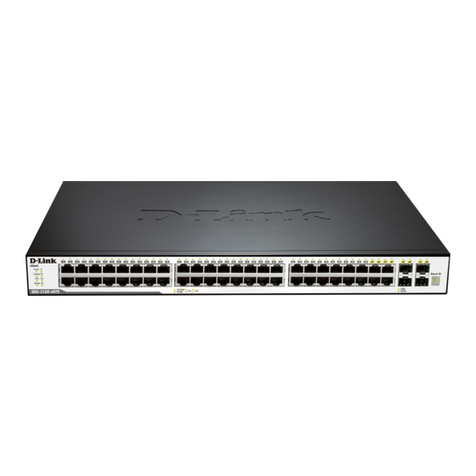
D-Link
D-Link xStack DGS-3120-48PC Hardware installation guide
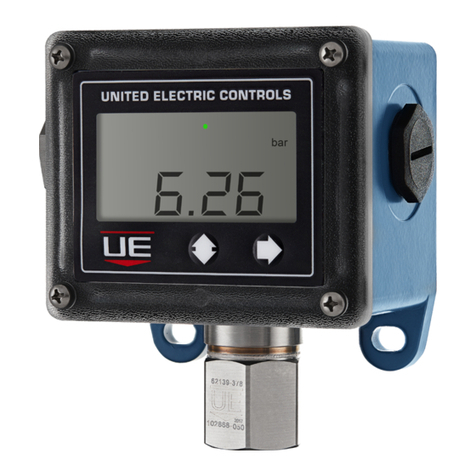
UE
UE ONE Series Installation and maintenance instructions
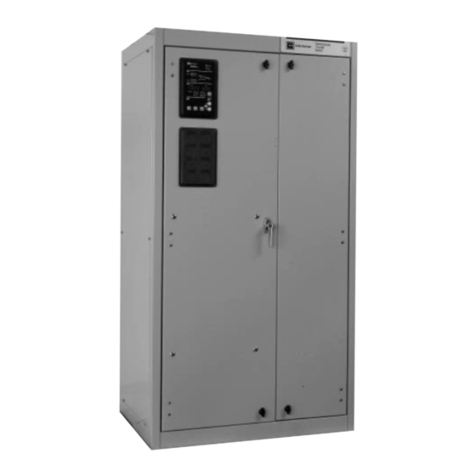
Eaton
Eaton Cutler-Hammer SPB instructions
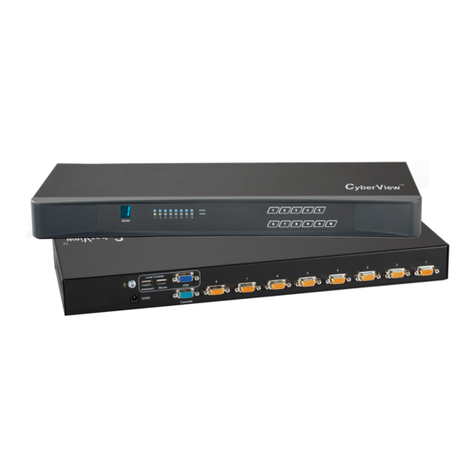
Austin Hughes
Austin Hughes CyberView CV-801K user manual
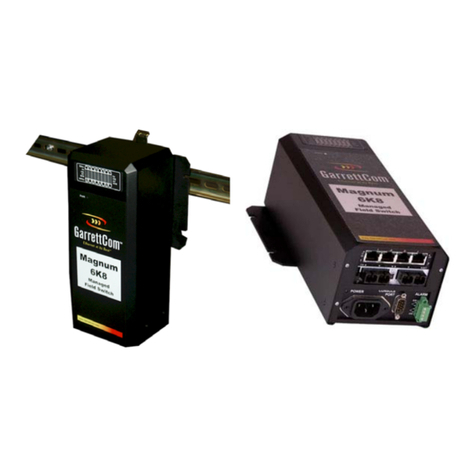
GarrettCom
GarrettCom Magnum 6K8-Series Hardware installation and user's guide
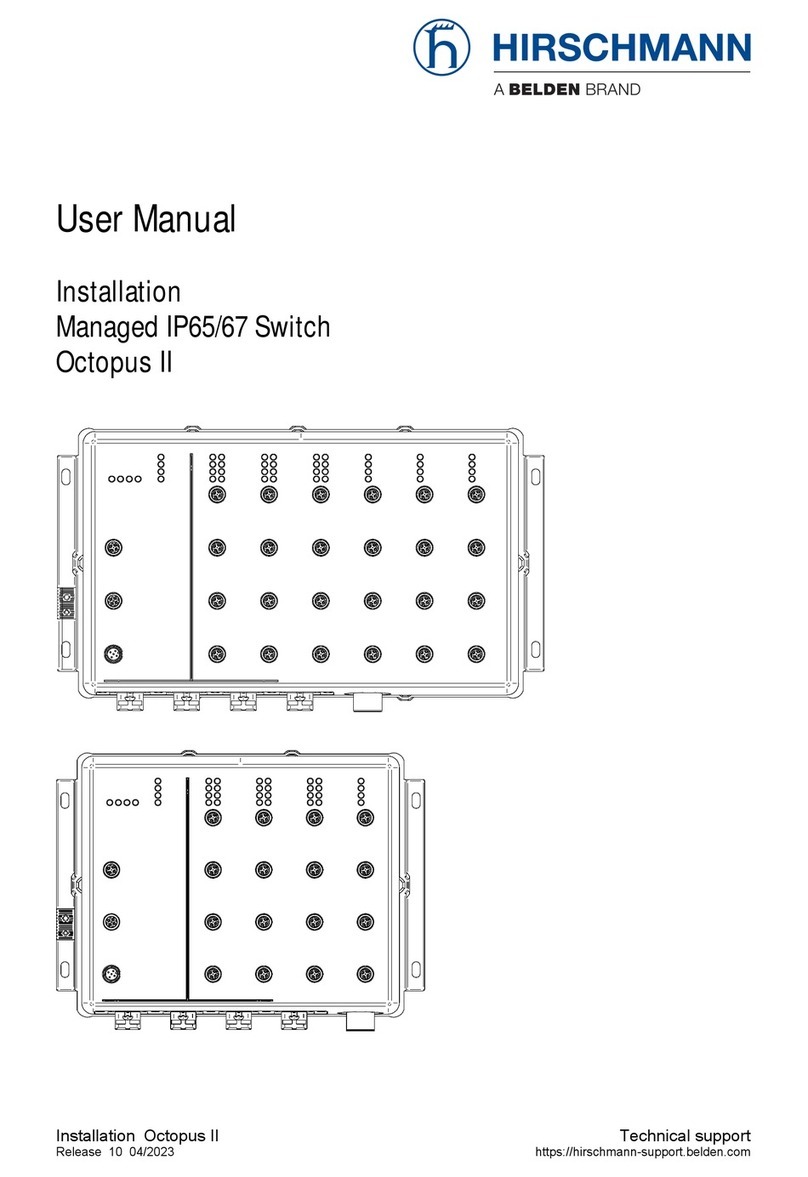
Belden
Belden HIRSCHMANN Octopus II user manual
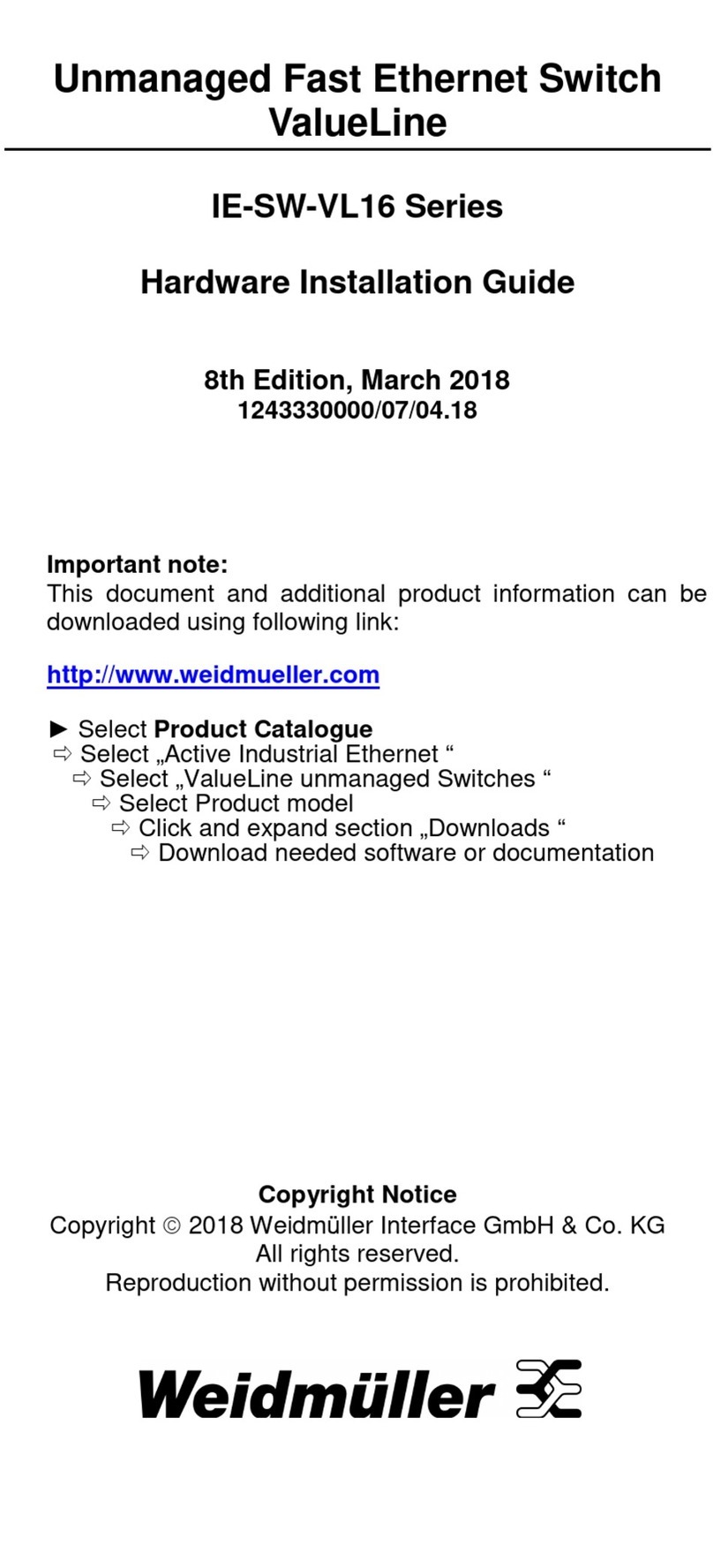
Weidmuller
Weidmuller IE-SW-VL16 Series Hardware installation guide
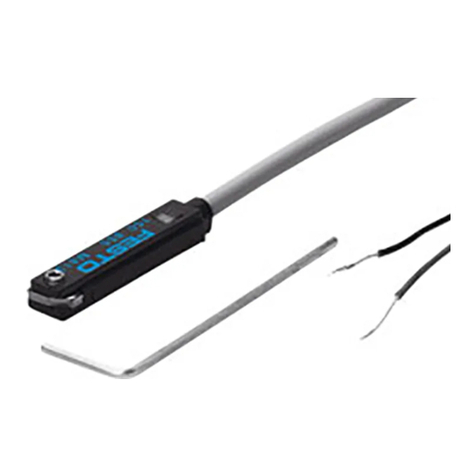
Festo
Festo SME-8 Series operating instructions
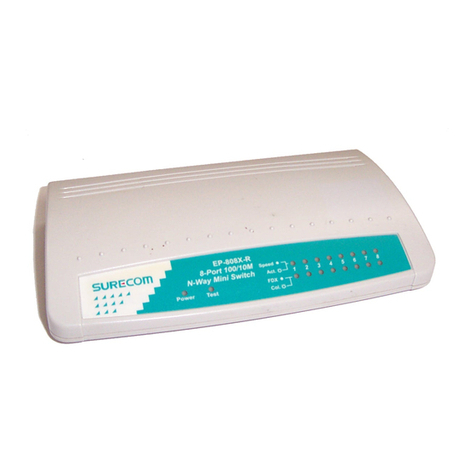
Surecom
Surecom EP-808X-R user guide
